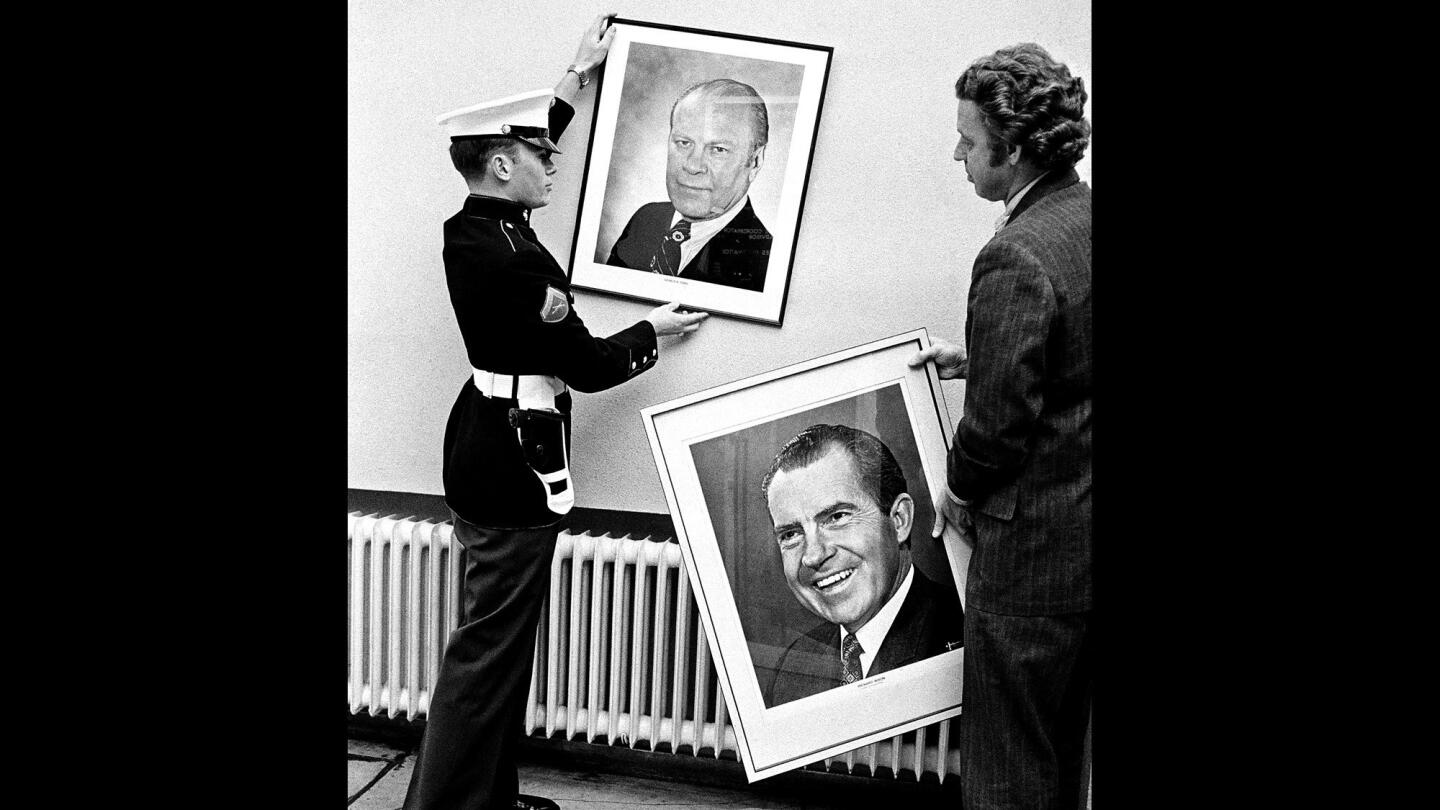A look back at some of the key moments and characters in the Watergate scandal.
Photos: President Nixon and Watergate
- Share via

Shortly after giving up power, President Nixon salutes his staff before boarding a helicopter and leaving the White House on Aug. 9, 1974. (Bob Daugherty / Associated Press)
A look back at some of the key moments and characters in the Watergate scandal.

A portrait of former President Richard M. Nixon is replaced by that of his successor, Gerald R. Ford, at the U.S. Embassy in Bonn, West Germany, on Aug. 9, 1974, the day Nixon left office. (Schlagmann / Associated Press)